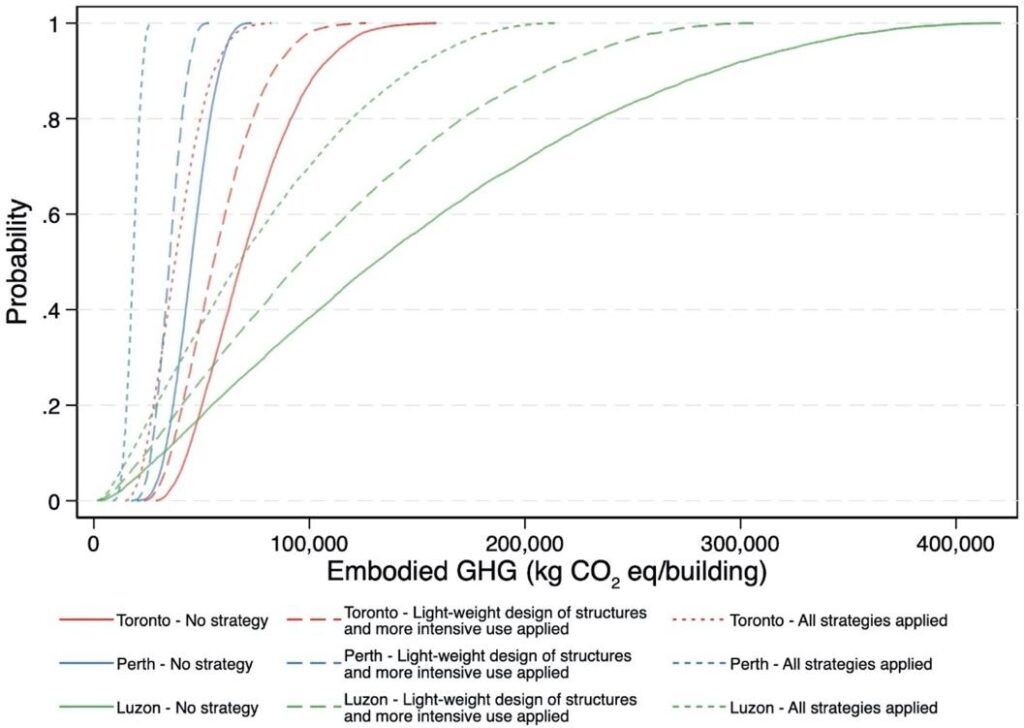Growing populations and associated housing construction has meant that building-embodied greenhouse gas (GHG) emissions are rising in both quantity and share of overall emissions. This research examines the embodied GHG emissions in single-family dwellings (SFDs) together and models three material and design strategies to decarbonize construction. The study focused on SFDs in three locations: Toronto (Canada), Perth (Australia), and Luzon (Philippines). Detailed materials and embodied GHG emissions quantifications were completed for 80 SFDs across the locations providing a detailed database to investigate the factors contributing to embodied GHG emissions. We find that embodied GHG intensity is heavily dependent on the material quantities. To mitigate the GHG emissions, structural light-weighing, more intensive use of buildings, and very low GHG material substitution are tested individually and combined.
By sequentially implementing these strategies – beginning with readily deployable approaches and transitioning to low-GHG materials – we can halve the embodied GHG emissions of SFDs (Figure 1). Achieving such ambitious goals requires collaborative efforts from policymakers, industry players, and consumers.
